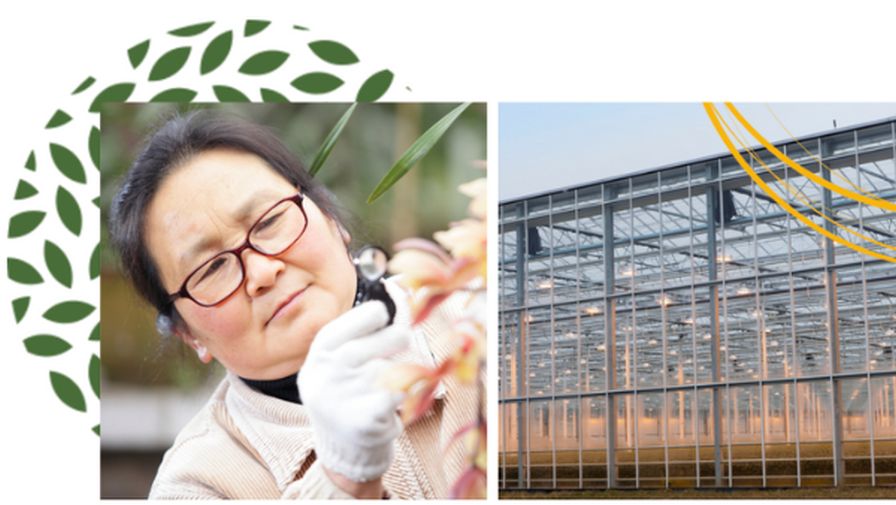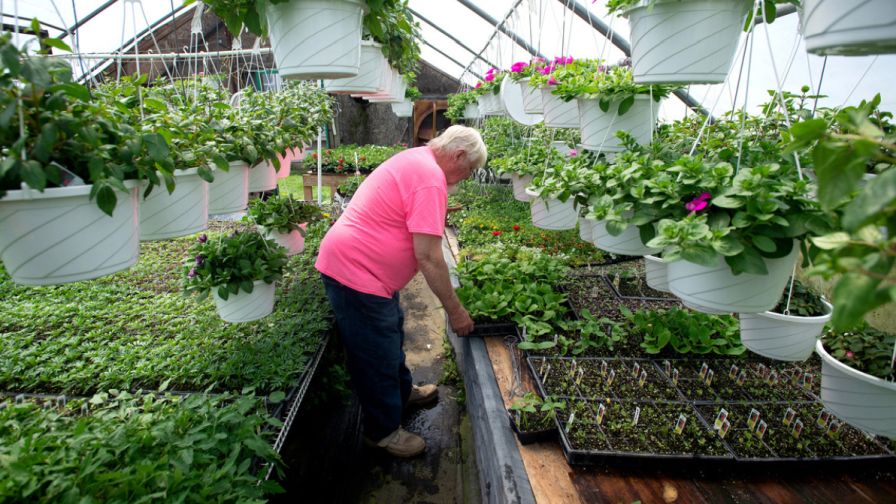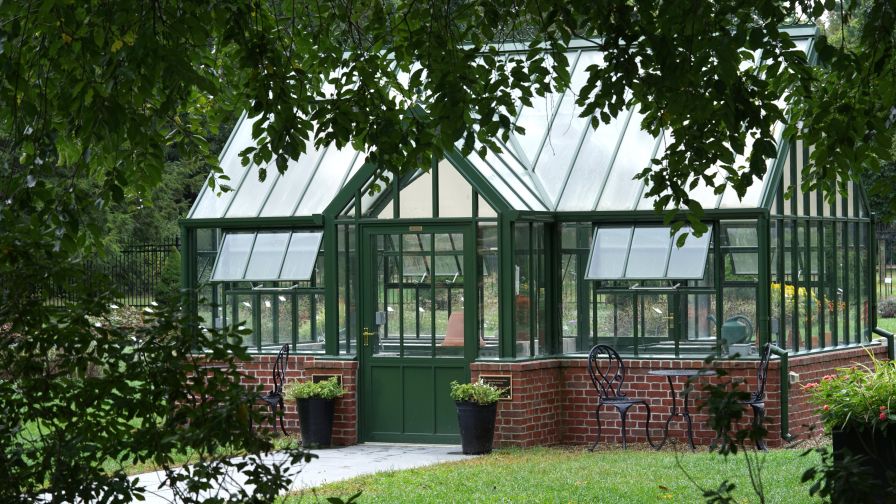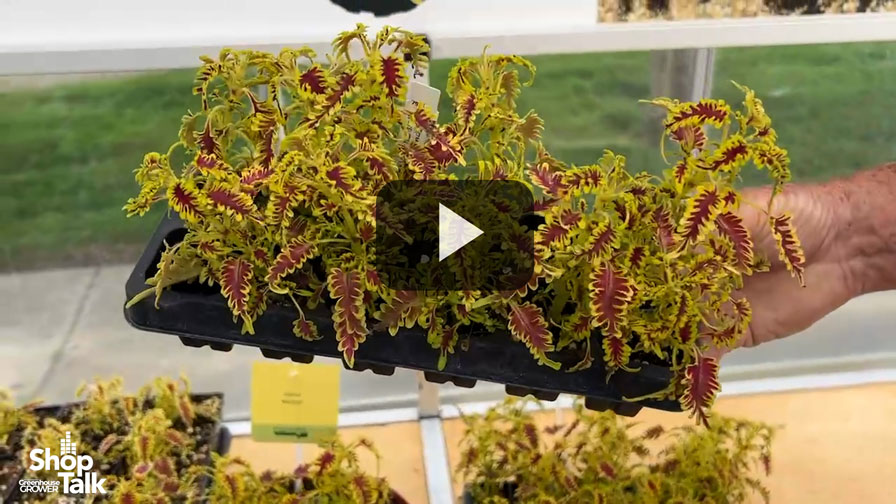How One Grower is Battling Botrytis with a New Biological
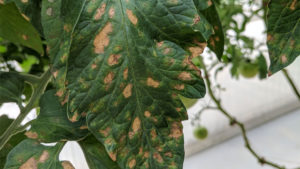
Botrytis lesions on the highly susceptible tomato variety ‘Beorange’, healed after BotryStop application.
Like all growers, we scout and run a preventive disease management program. In late April 2017, we started to see Botrytis in our greenhouse. It started in the stems, and was making its way up the plant on four of our tomato varieties: B Orange (with the worst Botrytis), Tamagotchi, Foronti, and Big Dena.
Despite our best efforts, the Botrytis increased in frequency through May. (We had a really mild spring with a lot of rain and not a lot of venting, which probably contributed.)
Around that same time, we found out about a new beneficial fungus available for the first time, Ulocladium oudemansii. In early June we started using the product, called BotryStop, from BioWorks.
Our first application was on June 2, at 2 tablespoons per gallon. By the second application, we could already tell it was adhering to the dead tissue. We saw a marked difference on B Orange especially, with the product affecting the leaves. Why was the disease worse on that variety? I think because it had not been through a lot of the rigorous genetics.
We did weekly applications of BotryStop after that, and we have been following low volume application rates throughout production. The Botrytis stopped entirely on the leaves, and just a small degree on stems. If you utilized the product early enough, you probably could eradicate it.
On June 29, we dropped the dosage down to 1 tablespoon per gallon because we saw a lot of improvement. We’ve been doing applications to the stems every other week since then, and on the canopy only as needed. If we see any flare-ups or it creeps into the canopy, then we’ll jump to the higher rate. Plants are growing through the affected leaves, so there is no new Botrytis on the leaves.
How It Works
According to BioWorks, BotryStop utilizes the naturally occurring non-pathogenic saprophytic fungus Ulocladium oudemansii Strain U3, a new active ingredient unique to North America.
When BotryStop spores are deposited on the dead and senescent plant debris, they germinate and colonize. The developing mycelia proceed to colonize dead tissue, and additional sporulation can occur. These new spores are then available to colonize remaining plant debris.
BotryStop aggressively occupies the same physical space and out-competes pathogens for the nutrients in dead and senescing plant tissue. It was developed specifically for the control of pathogens such as Botrytis cinerea, Sclerotinia sclerotiorum, and Monilinia spp.
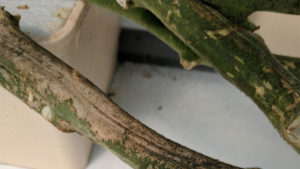
Stem lesions caused by Botrytis stopped by BotryStop and healed over. No further progression after application of BotryStop.
Visual Confirmation
If you’ve ever scouted for Botrytis, you know it leaves a wet appearance and will produce raised fruiting bodies. This material actually dries out the Botrytis.
The necrotic tissue is coated in a dark-gray coating, so that’s how you know it’s helping. Visually, it seems to be having some disruptive effects on the pathogen. It attaches itself to necrotic tissue. It undertakes a space competition — it prevents Botrytis from attacking, literally by not giving it the space.
A small factor to take note of: We applied with a hydraulic sprayer with a large droplet size, which left some dark water spots on the fruit. A bit unsightly, but no damage, no phytotoxicity, no health issues. It easily wipes off. If you’re sending fruit through a washing sterilization, then it’s not a problem.
After speaking with BioWorks’ technical support team, they informed me that applying with a fogger would eliminate the residue — as that is what they have seen with many ornamental users. However, if I have to mop the floor versus having Botrytis in the greenhouse, it’s a no brainer.
The biggest difference is no phytotoxic effects. With most aggressive products you have to be mindful of the time of day you apply so you don’t burn the leaves, and you don’t want to have large droplets. That’s still good practice, but it doesn’t appear that even if you apply in that way that you will hurt the crop.
Special Considerations
Good agitation is key with BotryStop. We always make sure we have good agitation on our mixer, because it can settle out quickly. We use hand sprayers that we shake as we go down the rows.
Also, it’s not a broad-spectrum fungicide; it’s very specific in its application. It’s important to understand it is Botrytis-specific. You’ll still need to be on the lookout for other organisms that might pop up.
Make sure if you have another issue, you don’t accidentally eradicate the fungus. Being a biological, you are applying another fungus. It needs to be alive in its active form.
As a grower we like using biologicals and beneficials in tandem. They all play nicely together.




